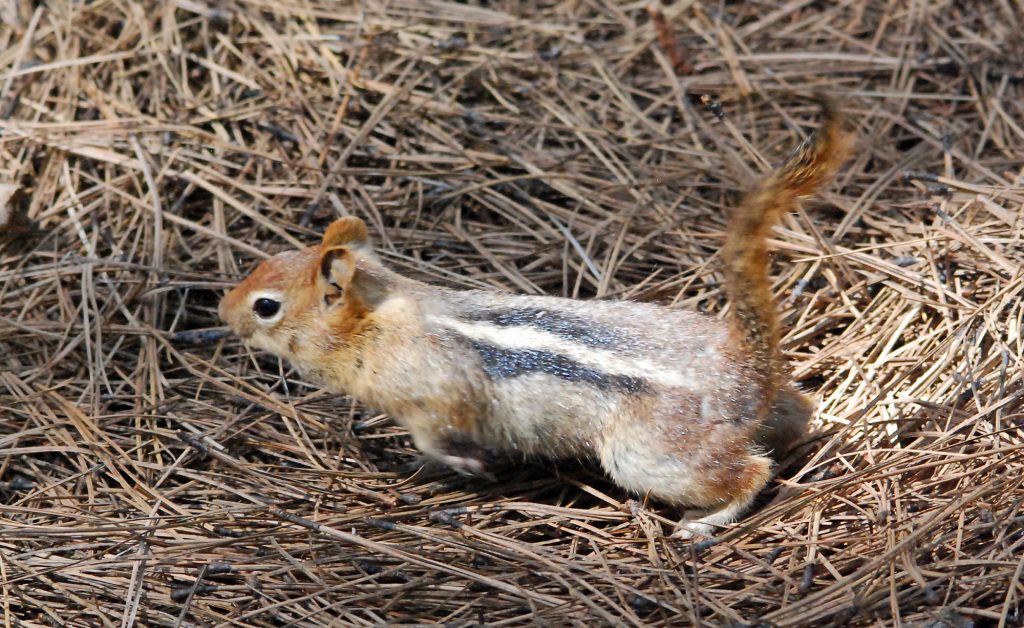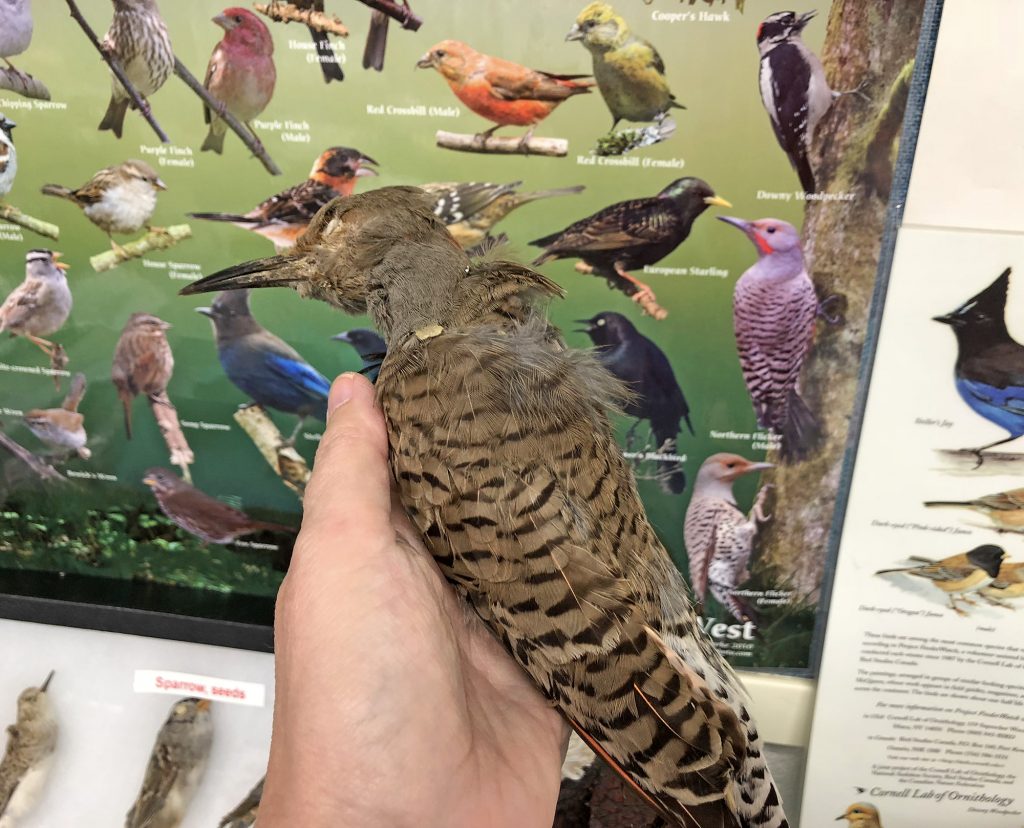
Field Marks Quick Identification Strategies


Field Marks Objectives
-
List the basic characteristics used to identify birds.
-
Use general structural characteristics, including field marks, to correctly identify a bird species.

To quickly identify species, you can use and modify this set of characteristics:
-
Habitat (location)
-
Size
-
Shape
-
Field Marks (distinctive spots, stripes, colors, overall patterns, and highlights like iridescence)
-
Behavior
This gallery of photos is of the same animal. Habitat, shape, field marks, and behaviors could be collected from several feet away. Size was determined by measuring the stump it was sitting on, after it was gone.
What animal is this?

Answer: ground squirrel, it is missing the cheek striping of chipmunks.
Field Marks Case #1: Preserved Specimen
The easiest way to learn identification is to practice with a photograph or specimen. In this case we do not have habitat or behavioral information, unless it was provided with the specimen or in collection field notes. However size, shape and field marks can be observed.
Field Marks Case #2: Dead Field Specimen
Even with precautions like hawk shapes taped to your glass windows, you may occasionally end up with dead birds in the garden. It is an opportunity to practice identification techniques.
Field Marks Case #3: Live Specimens
We’re working our way up to how most people identify birds: when they are alive and moving quickly.
Now we have habitat (a bird feeder in a yard), behaviors (grabbing seeds) and it is more challenging to capture size, shape, and field mark information.
See how you do.
Some of the ground-feeding birds like these mourning doves move slower and are easier to study.
Note their coloration and pattern act as camouflage when up against the dirt and dry summer grasses.
Here is one of the toughest birds to identify, because there are many species that are similar in appearance. The feet suggest is that this is a perching bird, classified in Order Passeriformes. There is more on bird classification in the next guide.
If you want to try your hand at identifying the species, you could use the free online Audubon field guide, or since it is from our yard, scan an Oregon resource.

In case all of the dead specimens leave you wanting to see live birds, Cornell Lab of Ornithology has an annual bird count opportunity that you can participate in wherever you are in the world.
This is the end of Guide 4B. Please proceed to the product page.

Check your knowledge. Can you:
-
list the basic characteristics used to identify birds?
-
use general structural characteristics, including field marks, to correctly identify a bird species?



